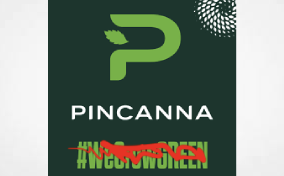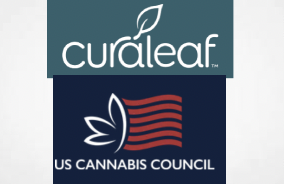Authored By: Gretchen L. Temeles, Ph.D.
December 18, 2017
Gretchen L. Temeles, Ph.D., practices in the area of intellectual property law with a focus on the chemical, biotechnology and pharmaceutical industries. Dr. Temeles assists clients with patent procurement and patent portfolio management. She has experience in patent landscape analyses, freedom-to-operate searches, patent due diligence, and non-infringement and invalidity opinions. She also assists clients with transactional work, including material transfer agreements and sponsored research agreements.
Contact Info At https://www.duanemorris.com/attorneys/gretchenltemeles.html
Cannabis: Patenting Opportunities in an Emerging U.S. Market
Patents are an important tool for businesses to secure a competitive advantage, particularly for companies in an emerging industry such as the cannabis industry. Contrary to popular belief, cannabis and cannabis-related inventions are not only are patentable, but the number of patents and applications being filed in this area is growing steadily. The evolving legal and regulatory framework and the development of new technologies as the industry matures and consolidates means that those businesses that have taken steps to patent protect their technologies early on are likely to be at a competitive advantage.
How do patents fit into the current state and federal cannabis regulations?
As of this writing, twenty-nine U.S. states and the District of Columbia have legalized medical marijuana. and eight states permit recreational use. Under federal law, cannabis remains a Schedule I controlled substance under the Controlled Substances Act. However, the United States Patent and Trademark Office (USPTO), an agency of the United States Department of Commerce, has issued, and continues to issue patents to cannabis and cannabis-related inventions. The USPTO has traditionally taken a hands-off approach to barring particular kinds of inventions from patentability. Congress has determined that two kinds of inventions are categorically not patentable: those encompassing human organisms (The Leahy-Smith America Invents Act (AIA) (Public Law 112-29, sec. 33(a), 125 Stat. 284), and those having as their sole purpose use in atomic weapons (The Atomic Energy Act of 1954, See 42 U.S.C. 2181(a)). Otherwise, assuming that a patent application covering cannabis or cannabis-related products meets the legal standards for patentability, the USPTO is presently granting such patents.
Historically, the USPTO has granted patents to pharmacological uses of cannabinoids and related compounds for the treatment of disease. Many of these earlier applications did not require possession of a Schedule I controlled substance. Since 2012, when Colorado and the state of Washington legalized recreational cannabis, the USPTO has granted an increasing number of patents to inventions that require anyone practicing the invention to have possession of cannabis.
Figures 1 and 2 provide a comparison of the number of granted patents and patent filings per year that include the terms cannabis, marijuana, and plant in their claims with the number of U.S. states in which cannabis has been legalized. Figure 1 shows the steady increase in the number of both the U.S. and international applications filed since 2012. Not surprisingly, this steady increase tracks the increase in the number of states in which medical and recreational cannabis has been legalized, as shown in Figure 2. The increasing number of both U.S. and international filings is likely to translate into increasing numbers of granted patents over the next few years.
What’s being patented in the cannabis industry?
A survey of the USPTO patent database reveals that a wide variety of cannabis-related inventions have been patented or are the subject of pending patent applications. These technologies relate to all aspects of cannabis production and use:
- cannabis plants: new strains of cannabis plants, methods and equipment used for cultivating cannabis plants and methods of monitoring cannabis plant inventories;
- cannabis processing: methods of extracting and processing active ingredients from cannabis plants;
- cannabis products: herbal preparations, smoking products, extracts, oils, resins, foodstuffs, nutritional supplements, beverages; cosmetics, animal feeds, and veterinary products;
- cannabis consumption devices: vaporizers, nebulizers, inhalers, wrappers for enclosing smokable substances; beverage dispensers;
- medical cannabis use: methods of treating diseases or disorders;
- detection and chemical analysis of cannabis: methods of quality control of cannabis products.
What stands out in the prosecution histories of cannabis patents is not the subject matter of the applications, but the routine nature of the prosecutions. The USPTO examines cannabis-related patent applications no differently than it examines other applications. A cannabis-related patent application is required to meet the same legal standards as any other application: the invention must be new, useful, and not obvious, and the patent application must teach one of ordinary skill in the art how to make and use the invention – that is all.
Patenting cannabis plants
The list of subject matter covered by the patents above is expansive, although all the technologies ultimately stem from the cannabis plant. So, let’s take a closer look at how cannabis plants fit into the patent system. The USPTO routinely grants patents on nonhuman living things. To be patentable, a cannabis plant must be in some way a product of human ingenuity. A cannabis plant that has simply been found in the wild is not patentable.
Cannabis plants are subject to two types of patenting regimes: utility patents, which are used for all of the types of inventions listed above, including plants, and “plant patents,” a special category of patents established by the USPTO.
The USPTO grants utility patents to plants that have novel features. These novel features can be a function of selective breeding or genetic engineering. A utility patent can include wide variety of claims including claims to plants, plant seeds, methods of breeding the plant, methods of cultivating the plant, and methods of processing the plant. For example, utility patents have been granted to cannabis plants with particular cannabinoid and terpene profiles. U.S. patent law requires that a patent application teach how to make and use the invention, but this requirement can be problematic for inventions directed to self-replicating living things such as plants. As a result, the USPTO allows an applicant to make a deposit of biological material, such as seeds, in an International Depositary Authority in order to satisfy the enablement requirement. Third parties may request a sample of the seeds from the depositary once the patent is granted. The USPTO generally does not require a deposit of biological material for transgenic plants, but it does require a disclosure of the nucleic acid or the amino acid sequence of the foreign gene.
Plant patents, as opposed to utility patents, are special category of patents covering plants that are asexually reproduced, that is, grown from cuttings and not from seed. Plant patent applications must include an explanation of the plant’s origin, a thorough botanical description of the plant and some photographs or drawings showing the essential characteristics of plant. There is no deposit requirement for a plant patent. A plant patent issues with only a single claim to the new variety described in the application. To date, the USPTO patent database lists only one cannabis plant patent.
Utility patents and plant patents differ in several commercially significant ways. Utility patents provide broader protection than plant patents. Utility patents can include generic claims to sexually reproduced plants as well as claims to seeds and methods of using the plant products. In contrast, plant patents cover only a single plant variety and its asexually reproduced clones. However, plant patents are generally simpler to prosecute than utility patents, so they may provide a more cost-effective route to patent protection. And, for applicants who choose not to deposit biological material, plant patents offer a way to secure patent coverage even if it is limited to one asexually reproduced variety. The two kinds of patents are not mutually exclusive. It is possible to obtain both a utility patent and a plant patent to a plant as long as the claims in the two patents are not identical.
Patenting strategies and implications
Whether a cannabis-related patent covers plants, processing methods, products, consumption devices or methods of detection, a patent is ultimately a business tool that a company should consider in the context of its overall business strategy. A patent is a right conferred by the government on the patent owner that allows the patent owner to exclude others from making, using, selling, offering for sale or importing the invention covered by the patent for 20 years. Several direct economic benefits spring from patenting a commercially valuable technology. First, a patent holder has the right to take legal action to prevent a competitor engaging in a variety of activities including making or selling the technology covered by the patent. Second, a patent puts competitors on notice that they will be subject to legal action if they engage in any of those activities. Third, a patent can be licensed bartered or sold. Licensing fees can provide a substantial revenue stream, particularly for patents that cover key platform technologies such as cultivation and processing methods.
There are also indirect economic benefits to having a patent. A patent provides funding and investment advantages by reassuring potential investors that a company can block competitors from using the company’s key technologies. A strong patent portfolio can make a company a more attractive target for acquisition. A patent can provide a company with credibility in the marketplace. Obtaining a patent also provides a way to recognize and retain the key employees responsible for inventing new technologies.
For now, these benefits play out differently in the cannabis industry than for other industries. U.S. patent laws are federal, not state laws. The conflict between federal law and state law governing cannabis possession means that it is uncertain how a patent infringement lawsuit would proceed in a federal court. Although this inconsistency may take some years to resolve, the 20-year patent term works to the advantage of those businesses that have patented their commercially valuable technologies. Clearly those businesses that aggressively seek patent protection today are doing so in anticipation of legalization of cannabis at the federal level. Companies that develop a strong patent portfolio now are likely to be at a competitive advantage if and when federal legalization takes place, even if that occurs five to ten years in the future. In the interim, a strong patent portfolio can make a company more attractive to potential investors and acquirers as the industry consolidates.
Takeaways
Cannabis and cannabis related inventions are patentable. Companies in the cannabis industry should consider patent protection as part of their long-term business strategy.
FIGURES
Cannabis-Patenting Opportunities in Emerging Market Figures submitted to Cannabis Law Journal, December 20, 2017 G.L. Temeles

















